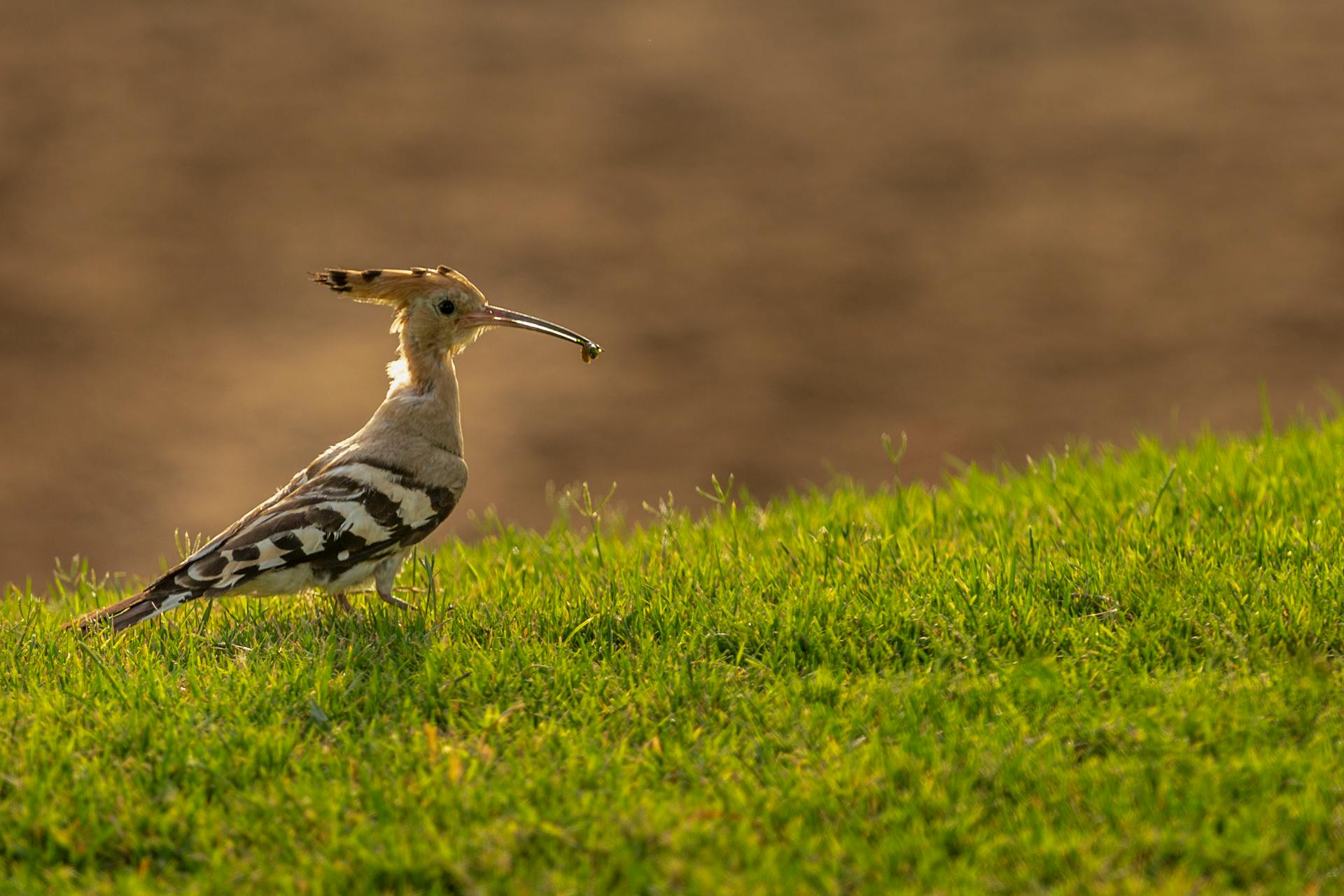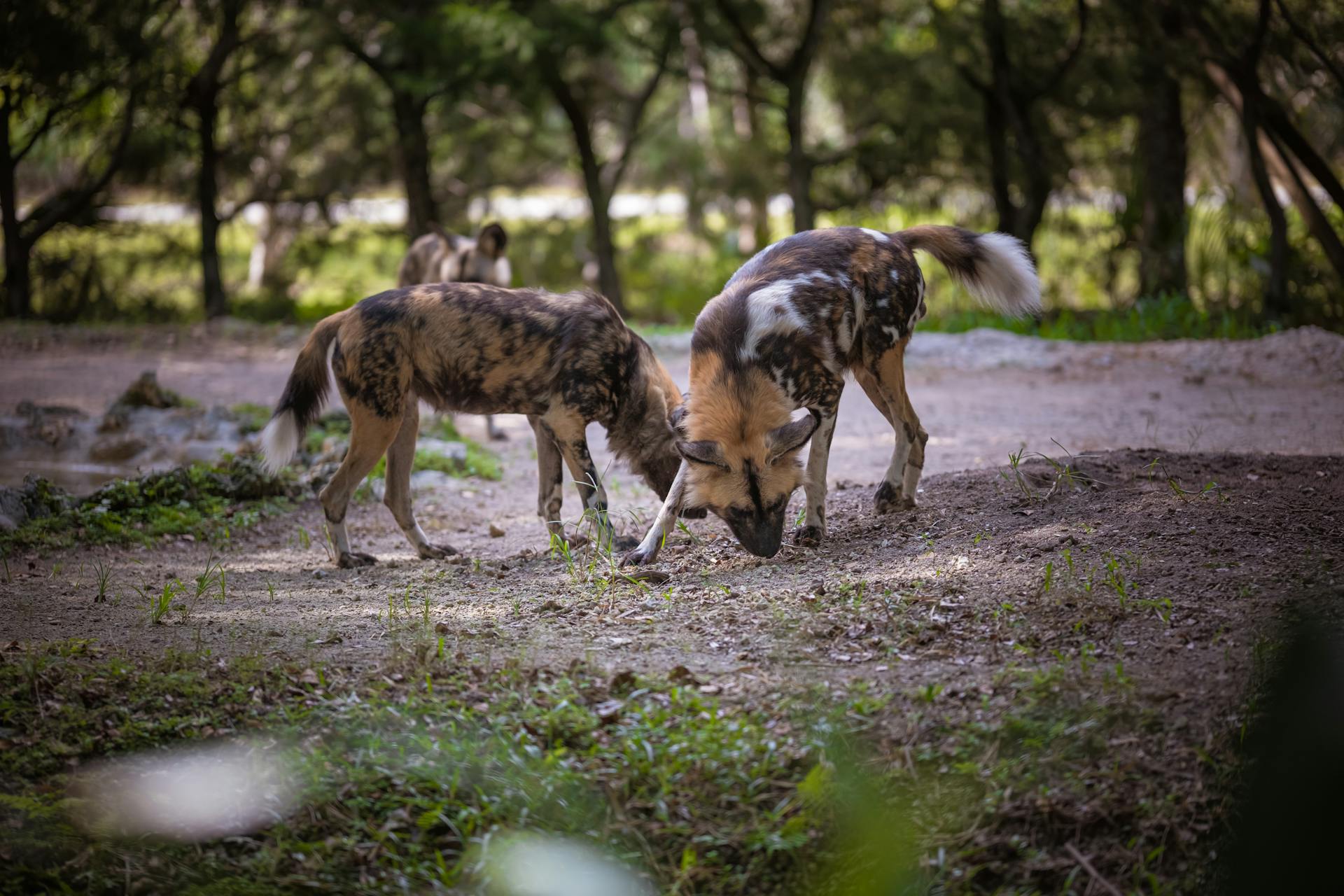
It's not uncommon for dogs to encounter slugs in their surroundings, especially in gardens or areas with high moisture.
Slugs can carry a parasite called rat lungworm, which can cause serious health issues in dogs.
Dogs can become infected by eating slugs or snails that carry the parasite.
The parasite can cause neurological symptoms such as seizures, paralysis, and even death in severe cases.
If your dog ingests a slug, it's essential to monitor them closely for any signs of illness.
Symptoms may not appear immediately, so vigilance is crucial in the first few weeks after exposure.
If you suspect your dog has ingested a slug, contact your veterinarian for advice and guidance.
You might like: Why Do Dogs Stop Eating Their Dog Food
What Are Slugs?
Slugs are gastropod molluscs, similar to snails but without shells. They're quite common in moist environments.
Slugs come out predominantly during the night time or after rain. I've seen them slithering around my garden on rainy evenings.
They're active at night because the moisture in the air helps them move more easily. This is probably why you'll often see them out and about during these times.
Slugs are usually most active in moist environments, which is why you'll often find them in gardens, forests, and other areas with high humidity.
Readers also liked: Why Do Dogs Puke up Their Food
Slug-Related Health Risks
If your dog eats a slug, it can cause lungworm, a serious disease that can lead to extreme health issues. Crenosoma vulpis and Angiostrongylus vasorum are two species of lungworm that can infect dogs through slug consumption.
Dogs can also get lungworm by drinking from a water bowl that's had an infected slug crawl through it or by playing with a toy that an infected slug crawled on. This is why it's essential to take precautions to prevent your dog from coming into contact with infected slugs.
In the UK and parts of Canada, the prevalence of Angiostrongylus vasorum is spreading, making it crucial to consult with your vet about regular lungworm preventative treatment, especially if your dog is prone to scavenging and eating slugs and snails.
Symptoms of lungworm infection can include extreme salivation, problem in respiration, and neurological dysfunction. If you suspect your dog has eaten a slug, brush their teeth and wash their mouth, and contact your vet immediately.
Some slugs are toxic to dogs, but not all slugs are inherently poisonous. They can become toxic if they've previously ingested slug and snail bait, which contains poisonous substances like metaldehyde.
If your dog has eaten a slug, monitor them for signs of illness and consult with your vet. They may recommend deworming and blood tests to check for poisoning.
To prevent your dog from getting lungworm, follow these measures:
- Don't leave your dog's toys outside where slugs and snails can crawl on them overnight.
- Don't leave water bowls outside overnight. Clean them well before your dog drinks from them.
- Look for and remove slugs (and snails) in your garden.
- When walking your dog, be vigilant about them eating anything.
- Remove dog poop from your yard right away.
By taking these precautions, you can significantly reduce the risk of your dog getting lungworm from eating slugs.
Lungworm Infection
Dogs can get lungworm by eating infected slugs and snails, which can be found in their environment, such as in grass or puddles. This is because slugs and snails can carry the lungworm parasite, and if your dog eats them, it can get infected.
The signs of lungworm in dogs can be quite non-specific and similar to signs of other conditions, but they may include heavy and sometimes bloody coughing, struggling to breathe, and losing weight quickly. These symptoms can start to show 1 to 3 weeks after your dog eats an infected slug.
If this caught your attention, see: Dog Eats Glass
If you suspect your dog has lungworm, it's imperative that you bring them to your veterinarian as soon as possible for treatment. The faster you do, the better your dog's prognosis, and catching lungworm early gives your dog the best chance of making a full recovery and avoiding some of the more severe signs of lungworm infection.
Here are some common signs of lungworm in dogs:
- Heavy and sometimes bloody coughing
- Struggling to breathe
- Losing weight quickly
- Excessive bruising and bleeding
- Very pale gums
- Diarrhea (can be bloody)
- Vomiting
- Lethargic
How to Get Infected with Lungworm
Dogs can get infected with lungworm by eating slugs or snails that contain the infective larval stage of the parasite. Slugs and snails are unlikely to be friends with dogs, but they can meet by accident, especially if your dog is eating grass or drinking from puddles.
If your dog eats a slug or snail, it's possible that it will also ingest the lungworm larvae that are living inside it. Some slugs and snails can carry the lungworm parasite, which can then infect your dog.

Lungworm larvae can also be found in the slime trail left behind by slugs and snails. If this slime ends up on dog toys or their water bowl, it can pose a risk of infection.
Here are some common ways dogs can get infected with lungworm:
- Eating slugs or snails that contain the infective larval stage of the parasite
- Drinking from a water bowl that has an infected slug crawled through it
- Playing with a toy that an infected slug crawled on
- Eating grass or drinking from puddles where slugs and snails live
It's essential to be aware of these risks and take preventative measures to protect your dog's health.
Lungworm Treatment
The exact treatment for lungworms in dogs depends on how advanced the infection is and how seriously it has affected the heart and lungs.
Dogs diagnosed with lungworm will be prescribed medication which is often able to kill the worms or the larvae.
More serious cases will need extra medication, oxygen or even blood transfusions depending on the symptoms the pet is experiencing.
Some cases may not respond to treatment, especially if the infection is advanced.
Related reading: Treatment for Dogs Eating Rocks
Preventing Lungworm in Dogs
If you live in an area where slugs and snails are common, it's essential to take steps to prevent lungworm infection in your dog.
Lungworm spreads to dogs mainly via infected slugs and snails, so it's crucial to be aware of the risks. Slugs and dogs are unlikely buddies, but they do tend to meet by accident.
Eating slugs or snails is not the only cause of lungworm infection in dogs. Lungworm larvae can be found wherever slugs and snails live, and their signature slime trail might contain larvae.
To prevent lungworm, speak to your vet about regular lungworm preventative medication for your dog. They will advise you based on the risk in your area.
Several highly effective options are available for prevention, so don't delay in discussing this with your vet.
Here are some additional measures to prevent your dog from getting lungworm:
- Don't leave your dog's toys outside where slugs and snails can crawl on them overnight.
- Don't leave water bowls outside overnight. If you do, clean them well before your dog drinks from them.
- Look for and remove slugs (and snails) in your garden. They like damp, moist, dark places best.
- When walking your dog, be vigilant about them eating anything. Slugs are attracted to rotting food, which can also make your dog sick.
- Remove dog poop from your yard right away. This can break the cycle of lungworm larvae being transferred from your yard to your pet.
By taking these precautions, you can significantly reduce the risk of lungworm infection in your dog.
Introduction and General Information
Dogs are naturally curious creatures, and their daily encounters with slugs can be a common occurrence. Their curious nature often leads them to poke and prod.
Dogs are bound to come across various critters during their daily walks, including slugs.
Why Do Dogs Eat?
Dogs eat slugs by mistake and sometimes out of enjoyment due to the mucus that slugs secrete being disagreeable to their taste buds.
If you haven't seen your dog with a slug in their mouth, it's tough to know whether or not your pet has eaten one. However, there are a few indicators that may point out that this occurred:
- Vomiting
- Fatigue
- Unusual habits (your dog shifting their tongue or mouth oddly)
- Mucus around their mouth
- Slug items or mucus subsequent to your dog
Dogs are attracted to slugs because of their movement and texture, which can be intriguing to their playful and inquisitive nature.
Some dogs may find the mucus secreted by slugs disagreeable to their taste buds, while others may eat them out of curiosity.
Training Your Dog
Training your dog to avoid slugs and snails is a crucial step in safeguarding your garden.
Creating a slug-hostile environment is a proactive measure, but it's not foolproof.
Consistent training sessions are key to instilling good behavior in your dog.
Using commands like "leave it" or "drop it" can be lifesavers when it comes to dissuading your dog from eating slugs.
Engaging the services of a professional dog trainer can be beneficial in instilling these vital commands effectively.
Positive reinforcement, such as treats and praises, encourages your dog to obey commands and avoid slugs.
Sources
- https://www.purina.co.uk/articles/dogs/health/parasites/lungworms-in-dogs
- https://vetplayas.com/my-dog-ate-a-slug-should-i-be-worried-vet-answer/
- https://www.hepper.com/my-dog-ate-a-slug/
- https://cooperandgracie.com/en-us/blogs/infos/are-slugs-poisonous-to-dogs
- https://dogstodaymagazine.co.uk/2019/05/22/pdsa-warning-after-dog-eats-over-100-slug-pellets/
Featured Images: pexels.com


